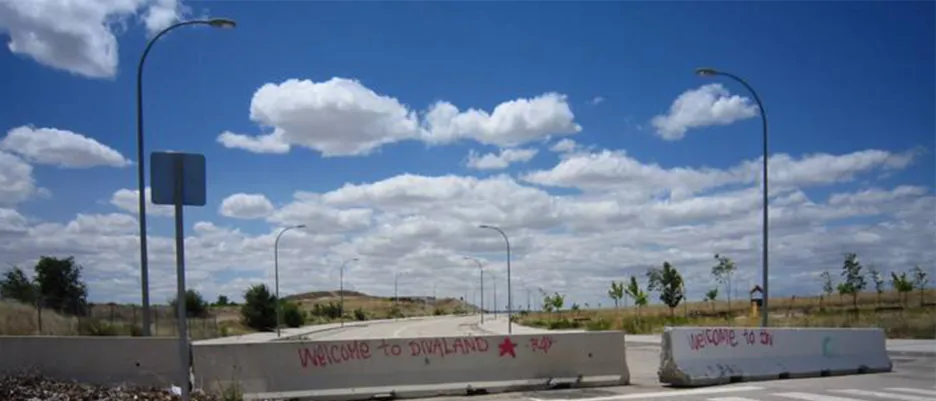vacant plots
Semester Project M.A. Landscape Architecture, Winter Semester 2014/15
Topic
The real estate market in Spain has been a lucrative speculative business over the past decade. Gigantic construction projects were built in and around Madrid. The new small towns were designed for up to 90,000 inhabitants and were partly intended to offer a new home to those who could not find housing in Madrid. For the most part, however, the projects were only conceived as value investments to get an investment chain going. The vacant housing promised considerable profits on the real estate market. Large-scale roads and other infrastructure were built into the landscape to connect the isolated satellite towns with the metropolis of Madrid. As a result of the financial crisis, the real estate bubble in Spain finally burst and many large-scale projects have been on hold ever since. The apartment blocks of the frozen projects are mostly unfinished or only partially finished. A large proportion of the apartments built are vacant (currently around 1 million apartments cannot find a buyer). The "vacant plots" - construction sites already cleared with roads - as well as a degraded, devastated landscape reveal the scale and lack of scale of the construction mania in aerial photographs. The inhabited parts of the new satellite cities lack public life: empty and neglected city squares are silent witnesses of the misplanning. But what to do with square kilometer-sized ghost towns and ruined buildings (the so-called "white elephants")?
Task
The task of the design project is to develop a new concept for the Villa de Vallecas district in southwest Madrid. The Ensanche de Vallecas area was designed in the late 1990s for 90,000 inhabitants, but has so far only been partially completed. The task is to find a medium- or long-term use for the now devastated public space. A development strategy can be found, for example a reinterpretation of the open spaces, so that the intended use can be realized (e.g. attracting residents through incentives). Another approach can be (especially in the case of vacant plots) to propose an interim solution that assigns the brownfields a recreational, energy or agricultural use until the construction project is continued. A third strategy may be a radical deconstruction of the construction site, returning it to its "natural" landscape condition or an energetic-agricultural use.
Supervision
Prof. Regine Keller, Dipl.-Ing. Juliane Schneegans, Dipl.-Ing. Felix Metzler
